Explore East London - South Africa Travel, Africa
East London, nestled on South Africa’s stunning Eastern Cape coastline, is a hidden gem offering rich cultural experiences and beautiful natural landscapes. Known for its laid-back charm, warm hospitality, and pristine beaches, this coastal city seamlessly blends history with modern attractions. Whether you’re an adventurer looking to explore its wildlife reserves or a culture enthusiast wanting to dive into Xhosa traditions, East London has something for everyone.
Population: Approximately 400,000 in 2024.
Economy: East London's economy is diverse, driven by manufacturing, trade, and tourism. The city is a key port, with industries including automotive and steel, contributing to its economic growth and development.
Landmarks: Famous for the Nahoon Beach, Steve Biko Centre, and Inkwenkwezi Private Game Reserve.
South Africa
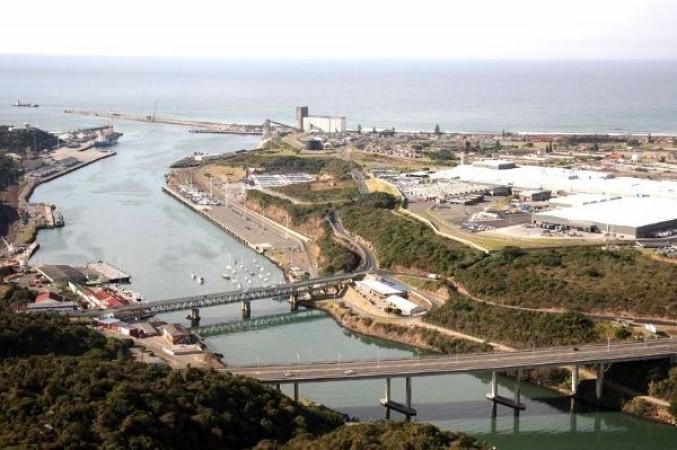
Overview of East London
History & Cultural Influence
East London’s history is deeply rooted in both British colonialism and indigenous Xhosa culture. Established as a harbor town in the mid-19th century, the city quickly grew into a hub for trade, driven by its strategic location along the Buffalo River and the Indian Ocean. The city's colonial past is visible in its architecture, but what truly shapes its soul is the strong presence of the Xhosa people. This indigenous community has long been the heart of the region, and their customs, language, and art have influenced the culture of East London. Landmarks like the East London Museum and the Steve Biko Centre showcase this blending of history, with artifacts that highlight the colonial era, along with exhibits celebrating the region’s rich Xhosa heritage.
Interaction with The Locals
East London, South Africa, has a population of approximately 400,000 people. The city is a diverse blend of cultures, with the majority being Xhosa, followed by smaller communities of English and Afrikaans speakers. The citizens of East London are known for their warm hospitality and strong sense of community. The Xhosa people’s rich traditions, including their language and customs, are prominent throughout the city, adding to its cultural vibrancy. East London’s citizens enjoy a relaxed lifestyle, with a focus on family, social gatherings, and outdoor activities.
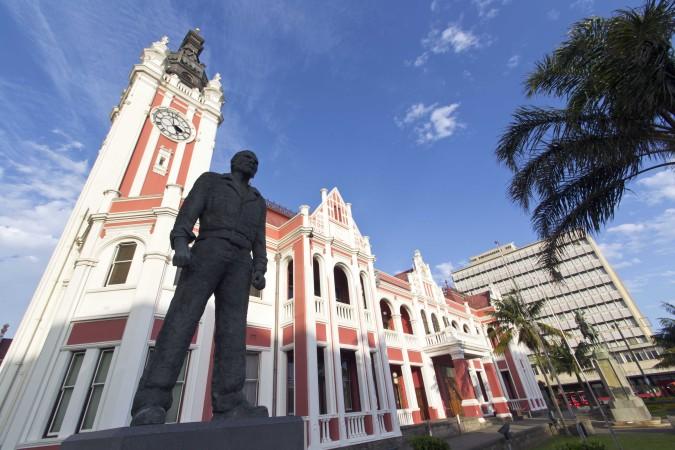
East London City Hall, South Africa - © Wikimedia
Top Attractions in East London
Nahoon Beach
Known for its golden sands, turquoise waters, and a vibrant surf scene, Nahoon Beach is one of East London’s most iconic spots. Whether you're a seasoned surfer or just learning, the beach offers consistent waves and several surf schools ready to help you catch your first ride. Beyond surfing, the beach is perfect for swimming, sunbathing, and beachcombing. There are scenic walking trails along the dunes, and the surrounding area is ideal for picnicking or a relaxing day by the ocean.
East London Museum
Delve into the rich history of East London at this must-visit museum, which is famous worldwide for its coelacanth exhibit. The coelacanth is a prehistoric fish thought to have been extinct for millions of years, until one was rediscovered off the coast of East London in 1938. In addition to this fascinating exhibit, the museum showcases a wide range of displays, from paleontology and archaeology to anthropology, covering both the natural history of the region and the cultural heritage of the Xhosa people.
Steve Biko Centre
This cultural and historical center is dedicated to the life and legacy of Steve Biko, a prominent figure in South Africa’s anti-apartheid struggle. Located in nearby Ginsberg Township, the center provides a powerful and moving look at Biko’s life, his philosophies on Black Consciousness, and his fight for freedom and equality. The center also features exhibitions, educational workshops, and a community space where local artists and musicians showcase their talents.
Inkwenkwezi Private Game Reserve
A premier wildlife destination just a short drive from East London, Inkwenkwezi Private Game Reserve offers an unforgettable safari experience. Spread over 10,000 hectares, the reserve is home to the famous Big Five—lion, leopard, elephant, buffalo, and rhino—as well as a variety of other wildlife. The reserve provides guided game drives in both open vehicles and on foot, giving visitors the chance to observe these majestic animals in their natural environment.
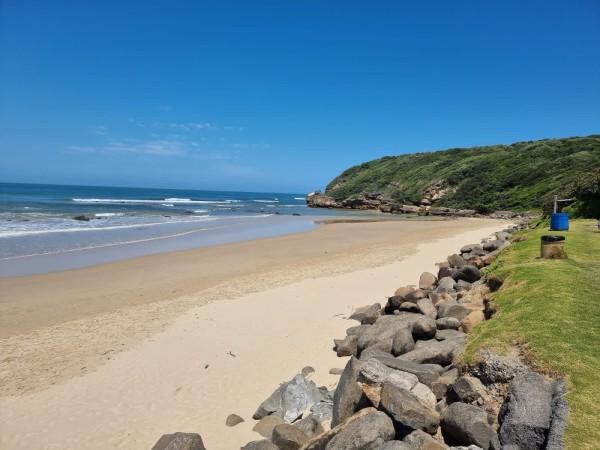
Nahoon Beach - © Buffalo City Metro Municipality
Must-Try Dishes in East London
East London’s culinary tradition offers a mix of traditional South African flavors, with a strong influence from the local Xhosa culture and other African, Malay, and Western cuisines.
- Umngqusho: A beloved Xhosa dish made with samp (crushed maize kernels) and sugar beans, slow-cooked to a soft, rich consistency. It’s often served with a side of beef stew or chicken, making it a hearty meal perfect for any time of the day.
- Bobotie: A Cape Malay dish that has found its way into East London’s kitchens. Made from spiced minced meat baked with an egg-based custard topping, it’s served with yellow rice, chutney, and a side of vegetables, offering a perfect balance of sweet and savory flavors.
- Koeksisters: These twisted, syrup-soaked doughnuts are a sweet treat that’s hard to resist. Crunchy on the outside and soft inside, koeksisters are perfect for enjoying with a cup of coffee or tea.
- Potjiekos: A traditional South African stew prepared outdoors in a cast-iron pot over an open flame. The pot is filled with layers of meat, vegetables, and potatoes, slowly simmered in a flavorful broth. It’s a communal dish often served at gatherings and a fantastic representation of South African hospitality.
- Vetkoek: A deep-fried dough bread served either savory or sweet. The savory version is often stuffed with curried minced meat or cheese, while the sweet version is drizzled with syrup or honey.
- Sosaties: These are South African kebabs, typically marinated in a tangy, sweet sauce made from apricots, garlic, and spices. Sosaties are skewered and grilled, offering a mouth-watering combination of smoky, sweet, and savory flavors.
- Melktert: A traditional South African milk tart with a creamy, custard-like filling set in a light pastry crust. Lightly dusted with cinnamon, it’s a popular dessert in East London and is often enjoyed with tea.

Umngqusho - © Wanted Online
Festivals & Local Celebrations
Buffalo City Carnival
Held annually in March, this lively event showcases the vibrant cultural diversity of East London. The carnival features colorful parades, live music, dance performances, and elaborate costumes that celebrate the heritage of the city’s different communities, including Xhosa, Afrikaans, and English cultures. Food stalls offer traditional South African dishes, and there's plenty of entertainment for all ages. It’s a true celebration of unity, bringing locals and tourists together for a weekend of fun and festivity.
Xhosa Cultural Festival
This festival is dedicated to preserving and celebrating the heritage of the Xhosa people, who are native to the region. It typically takes place in late summer and includes traditional music, drumming, dancing, and storytelling. Visitors can watch or participate in various cultural activities, such as beadwork demonstrations, stick fighting, and initiation rituals. The festival also features food stalls serving Xhosa delicacies, making it an immersive cultural experience for tourists interested in learning more about the local traditions.
East London Surf Classic
As one of the greatest South Africa’s surfing destinations, East London hosts this highly anticipated annual surf competition at Nahoon Reef, usually in July. Surfers from across the country and the world come to compete, battling the renowned waves of the Indian Ocean. The event attracts not only surfers but also spectators who can enjoy live music, beach activities, and food stalls along the shore. It’s a perfect opportunity to experience the laid-back beach culture of East London while witnessing some top-tier surfing action.
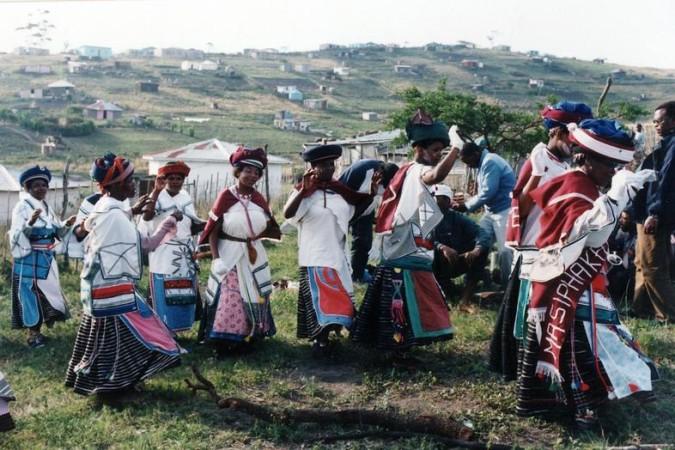
Xhosa Cultural Festival - © South Africa Online
What to Do in East London
- Surfing at Nahoon Reef: Renowned for its world-class surf breaks, Nahoon Reef is the perfect spot for both beginners and experienced surfers. There are several surf schools nearby offering lessons and board rentals for those wanting to ride the famous waves.
- Wildlife Safari at Mpongo Park: Located just outside of East London, Mpongo Park provides an incredible wildlife experience. The park is home to lions, elephants, and a variety of other wildlife. You can explore the park on a guided game drive or on foot, immersing yourself in South Africa’s stunning natural beauty.
- Fishing at Buffalo River: East London’s Buffalo River offers excellent fishing opportunities for both seasoned anglers and beginners. The river is home to various species, including yellowfish and bass, and there are guided fishing tours available.
- Hiking at Gonubie Beach: For a more relaxed activity, consider a scenic coastal hike along Gonubie Beach. This trail offers stunning views of the Indian Ocean and leads to rocky outcrops and tidal pools, making it a favorite for birdwatchers and nature lovers.
Shopping in East London
- Craft Markets: For authentic souvenirs, head to one of East London’s many craft markets. The Beachfront Craft Market, held on weekends, offers locally made items like beadwork, pottery, and traditional Xhosa garments. These are excellent gifts or souvenirs of your vacation.
- Vincent Park Mall: This modern shopping center is home to a variety of stores, from high-end fashion brands to local retailers. It's the ideal spot to fill up on necessities or indulge in some retail therapy.
- Hemingways Mall: Hemingways Mall, named after the great novelist who formerly resided there, is East London's largest shopping complex. In addition to shopping, it offers entertainment options such as a cinema, arcade, and a variety of restaurants and cafés.
- Local Boutiques: For a more personalized shopping experience, explore the city’s smaller boutiques and galleries, where you can find unique items such as handcrafted jewelry, African art, and clothing by local designers.
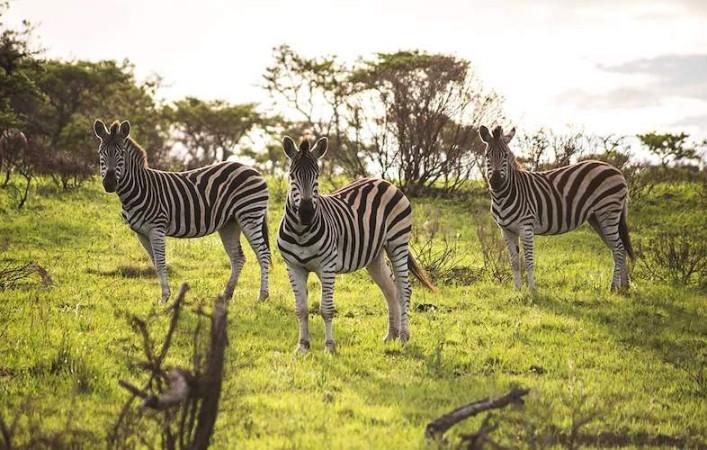
Wildlife Safari at Mpongo Park - © South Africa Nature Reserves
Weather in East London: Best Time to Visit
East London's climate provides a pleasant experience for tourists all year, with a warm and temperate oceanic climate influenced by its seaside position.
Spring in East London
Spring temperatures range from 15°C to 25°C (59°F to 77°F), with gradual warming and occasional rain. The season is marked by blooming flowers and a vibrant atmosphere, making it a great time for outdoor activities and exploring East London’s natural beauty.
Summer in East London
Summer temperatures in East London range from 20°C to 28°C (68°F to 82°F). This season is characterized by warm, sunny days and occasional afternoon thunderstorms, which help cool the air. It’s the perfect time for beach activities and outdoor events, though visitors should be prepared for higher humidity and potential rain.
Autumn in East London
Autumn brings cooler temperatures, ranging from 15°C to 25°C (59°F to 77°F). The weather is mostly dry, with bright sky and light breezes. This season is ideal for exploring the city and enjoying outdoor activities without the summer heat.
Winter in East London
Winter in East London is mild compared to many other regions. Temperatures range from 10°C to 20°C (50°F to 68°F), with crisp, cool mornings and warmer afternoons. Rainfall is infrequent, and while it’s too chilly for beach swimming, it’s an excellent time for sightseeing and enjoying the city’s cultural attractions.
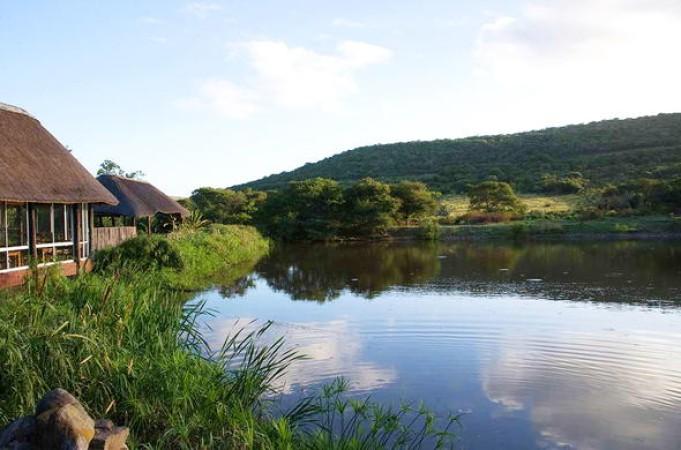
A clear day to explore Mpongo Game Reserve - © South Africa Nature Reserves
Essential Travel Information
Getting Around East London
- Public Buses: The city’s public bus system provides an affordable way to travel within East London and to nearby areas. Buses are operated by local companies and offer routes covering major attractions and residential areas.
- Taxis and Ride-Sharing: Metered taxis are available throughout the city, and ride-sharing services like Uber and Bolt are also popular. They offer convenient and flexible transportation options, especially for visitors who prefer door-to-door service.
- Bicycles: For a more eco-friendly way to explore, consider renting a bicycle. East London’s flat terrain and scenic routes make cycling an enjoyable option for getting around the city and visiting local attractions.
- Walking: Many of East London’s attractions are within walking distance of each other, particularly in the city center and along the beachfront. Walking is a pleasant way to experience the city’s atmosphere and discover hidden gems.
ATM & Banking Services
Accessing cash and banking services in East London is stress-free, with numerous ATMs and banking facilities available throughout the city. ATMs are conveniently located at shopping centers, major hotels, and the airport, accepting international cards such as Visa and MasterCard. Most banks offer a range of services including currency exchange, account management, and financial advice during regular business hours. Major credit cards are widely accepted at hotels, restaurants, and shops, and mobile payment options are increasingly common.
Where to Stay in East London
- Luxury Hotels: For those seeking a high-end experience, luxury hotels in East London provide upscale rooms, excellent amenities, and stunning views of the surrounding area. These hotels often feature fine dining restaurants, spas, and concierge services to enhance your stay.
- Mid-Range Hotels: Mid-range hotels provide a balance of comfort and cost. These establishments provide modern rooms, convenient locations, and a range of facilities such as fitness centers and business services, making them ideal for both leisure and business travelers.
- Guesthouses: For a more personalized touch, guesthouses and bed and breakfasts offer cozy accommodations with local charm. Many of these options include breakfast and provide a homely atmosphere, perfect for a more intimate stay.
- Hostels: Budget travelers will find hostels to be a cost-effective option. These hostels offer affordable lodging with a social environment, making it easy to meet fellow travelers and explore the city without breaking the bank.
Articles for you
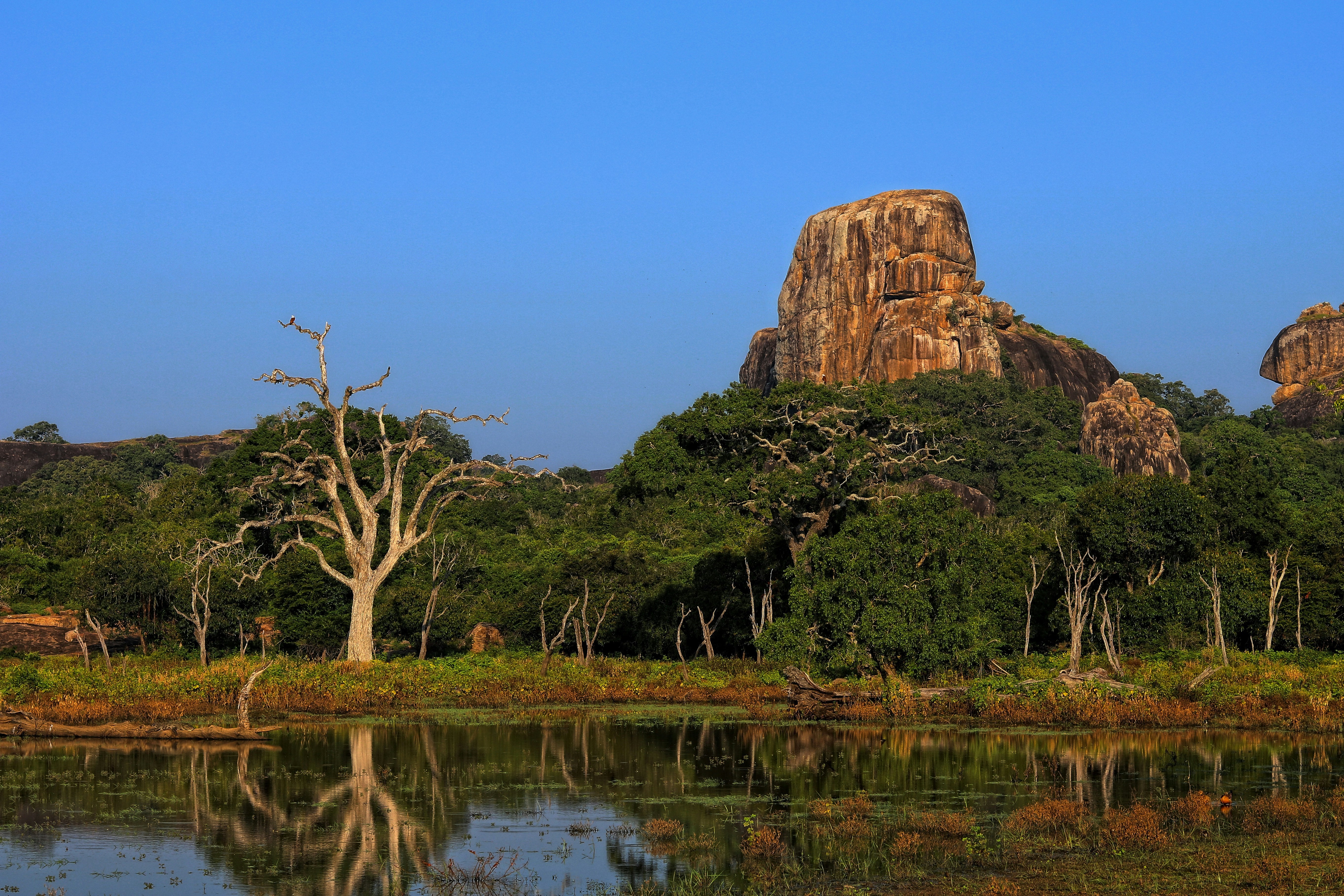
Explore Yala National Park - Sri Lanka Travel, Asia
Tucked away in Sri Lanka’s southeastern corner, Yala National Park is where wild nature meets deep tradition. Known worldwide for its leopard population, the park is also home to elephants, sloth bears, crocodiles, and hundreds of bird species. Beyond wildlife, Yala opens doors to a cultural landscape dotted with ancient temples, Buddhist ruins, and coastal villages. For travelers seeking more than just a safari, Yala offers a chance to explore eco-tourism, local communities, and sacred heritage sites.
Population: The Yala National Park area doesn’t have a human population.
Economy: The economy around Yala National Park thrives on a blend of eco-tourism, agriculture, and local services. Safari tours, eco-lodges, and cultural experiences drive steady income for nearby towns like Tissamaharama and Kataragama, supporting thousands of families.
Landmarks: Famous for Block I of Yala and wildlife encounters, including elephants, sloth bears, crocodiles, and exotic bird species.
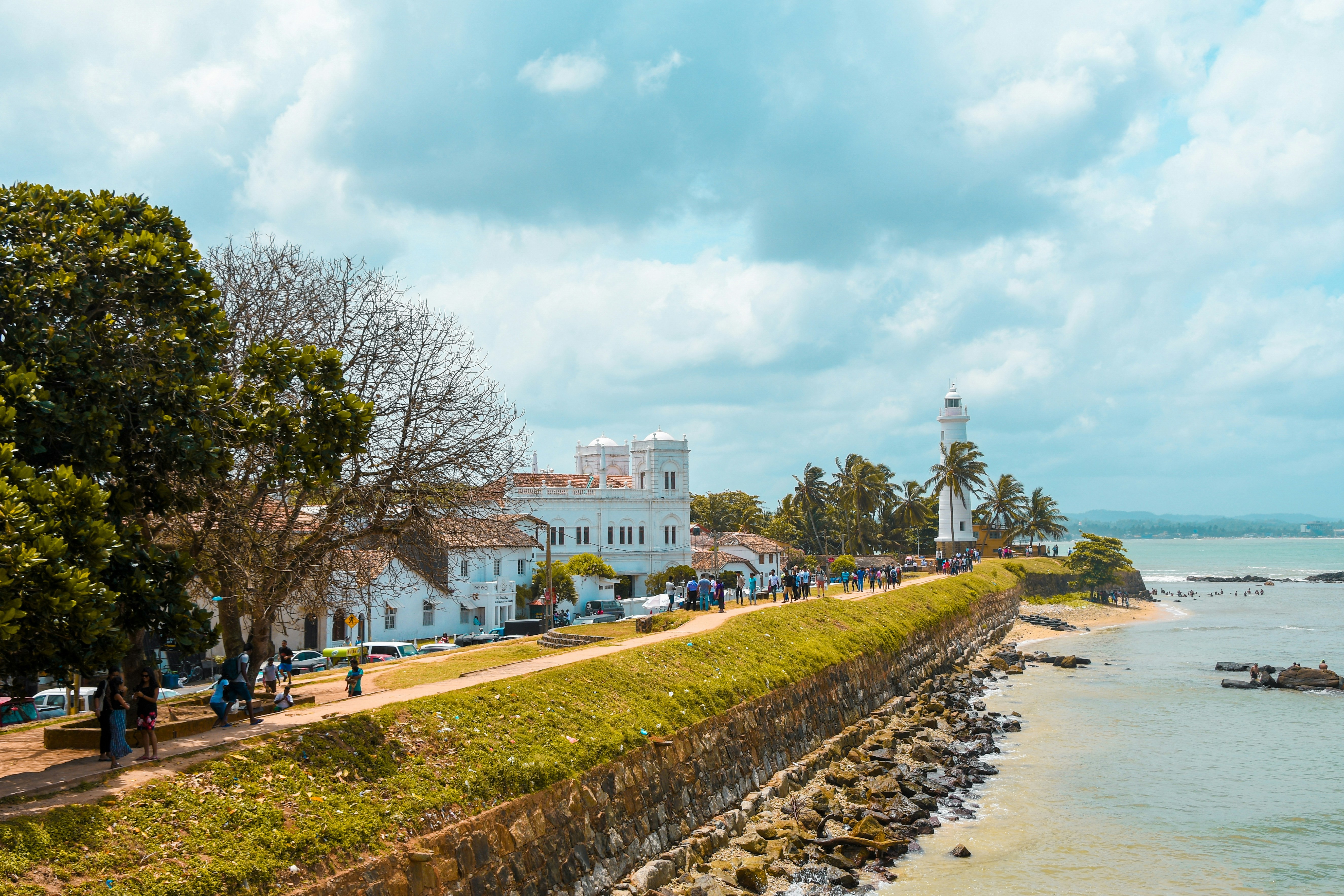
Explore Galle - Sri Lanka Travel, Asia
Nestled on Sri Lanka’s southern coastline, Galle is a vibrant city where history meets the sea. Its cobbled streets, colonial architecture, and serene beaches make it a must-visit destination for travelers seeking a blend of culture, adventure, and relaxation. A UNESCO World Heritage site, Galle captivates visitors with its Dutch Fort, bustling markets, and friendly locals. Whether you’re exploring the ramparts at sunset or savoring fresh seafood by the shore, Galle promises an unforgettable journey into Sri Lanka’s heritage.
Population: Approximately 113,000 in 2023.
Economy: Galle’s economy thrives on tourism, trade, and fisheries. The city’s historic fort, colonial architecture, and coastal charm draw thousands of international visitors each year, making tourism its main economic driver. Fishing remains vital for local livelihoods, supplying fresh seafood across the region.
Landmarks: Famous for the Galle Fort, Dutch Reformed Church & Maritime Museum, and Unawatuna Beach.
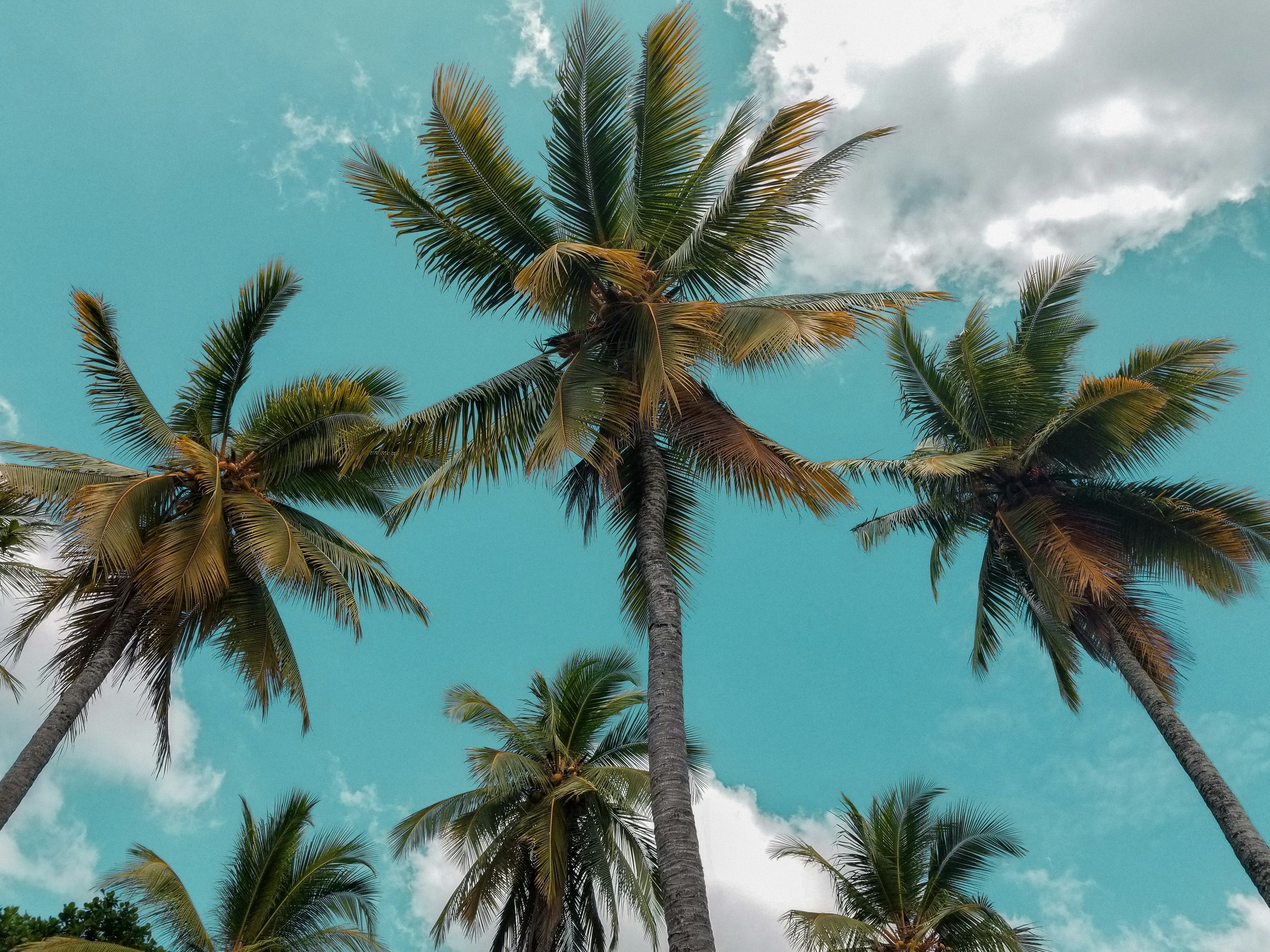
Explore Bentota - Sri Lanka Travel, Asia
Nestled along Sri Lanka’s southwestern coast, Bentota is a tropical paradise that blends golden beaches, vibrant culture, and thrilling adventures. Famous for its calm waters, luxury resorts, and scenic river estuary, Bentota has become a top destination for travelers seeking both relaxation and authentic experiences. From serene beach walks at sunrise to adrenaline-pumping water sports, this coastal town offers a perfect balance of leisure and exploration. With its proximity to Colombo and Galle, Bentota is easy to reach, making it an ideal stop for both short escapes and extended holidays.
Population: Approximately 37,000 in 2023.
Economy: Bentota’s economy thrives mainly on tourism, which drives local businesses such as hotels, restaurants, and wellness retreats. The town also benefits from fishing, coconut cultivation, and handicrafts like wood carving and batik textiles. Many residents rely on the growing demand for water sports and Ayurvedic treatments, making tourism the backbone of both income and employment in the area.
Landmarks: Famous for Bentota Beach, Bentota River Safari, and Kande Vihara Temple.
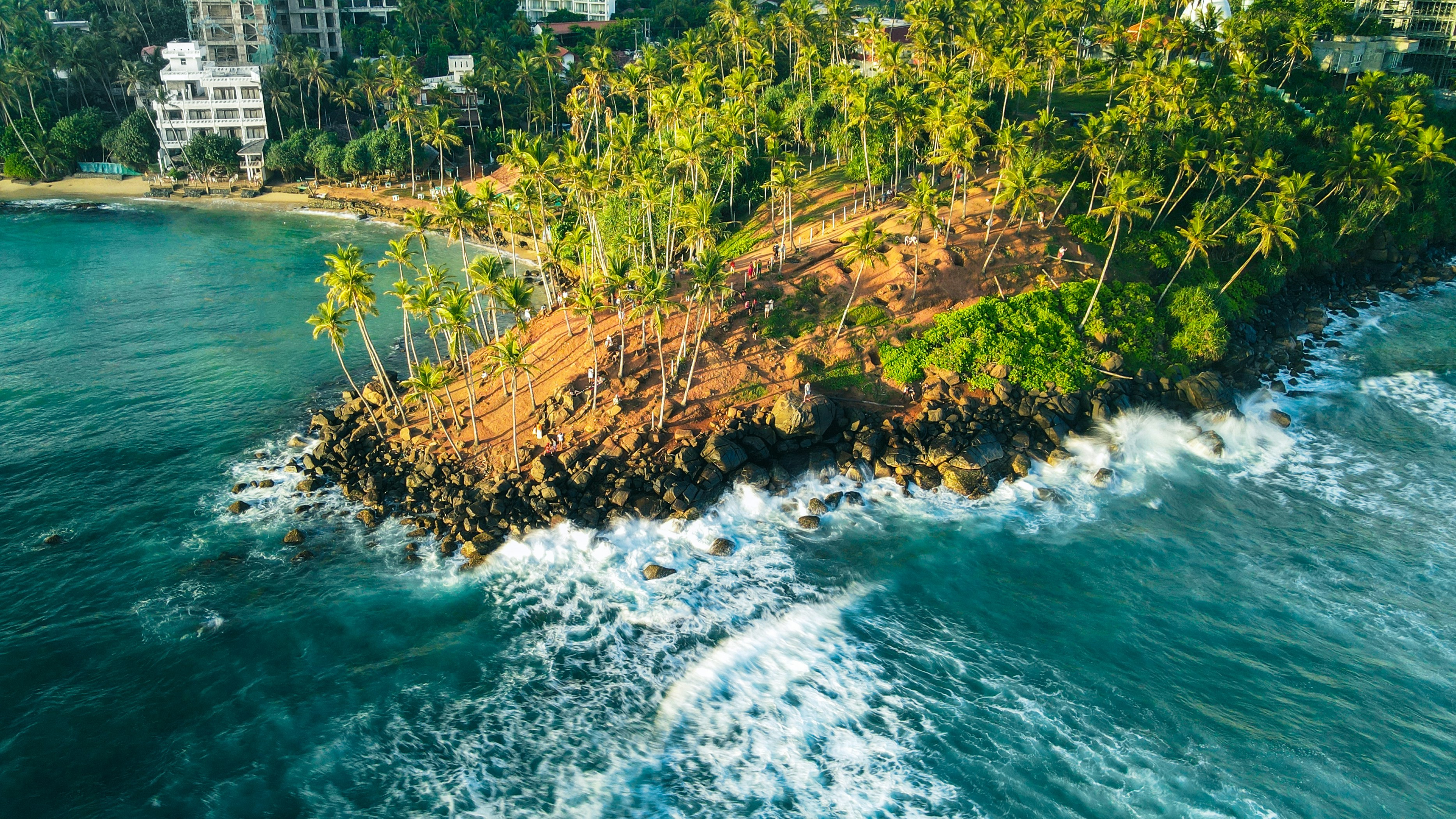
Explore Mirissa - Sri Lanka Travel, Asia
Mirissa is a charming coastal town on Sri Lanka’s southern shoreline. Known for its golden beaches, turquoise waters, and vibrant marine life, it has become a must-visit stop for travelers exploring the island. Many come for whale watching, surfing, and sunset views at Coconut Tree Hill, but Mirissa offers much more than postcard beauty. The fishing boats you see anchored by the bay carry generations of stories. Local traditions, delicious cuisine, and a laid-back rhythm of life shape every visitor’s experience.
Population: Approximately 4,700 in 2023.
Economy: Mirissa’s economy is largely shaped by its coastal location. Fishing has long been the backbone of local livelihoods, with generations relying on the Indian Ocean for income. In recent decades, tourism has become the main driver of growth, thanks to whale watching, surfing, and beachside hospitality.
Landmarks: Famous for Mirissa Beach, Coconut Tree Hill, and Parrot Rock Bridge.
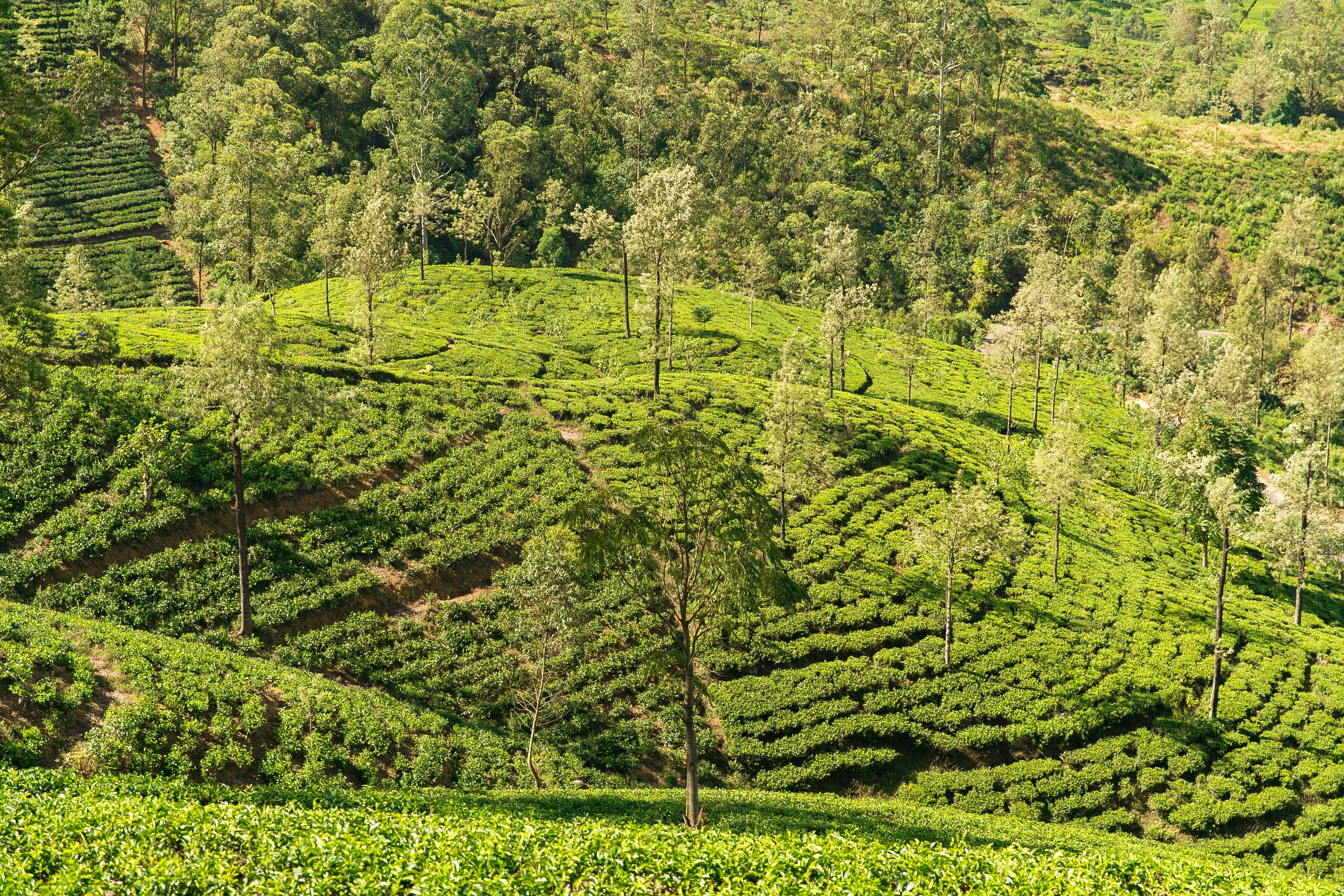
Explore Nuwara Eliya - Sri Lanka Travel, Asia
Tucked away in the Central Highlands of Sri Lanka, Nuwara Eliya is often called “Little England”. With its rolling tea plantations, cool misty mornings, and colonial charm, this mountain town feels like a step into another world. Travelers come here to breathe fresh air, walk through flower gardens, sip the finest Ceylon Tea, and enjoy a pace of life far from the island’s busy cities. Whether you’re drawn by scenic landscapes, heritage architecture, or the warmth of its people, Nuwara Eliya is a destination that blends nature, culture, and history in perfect harmony.
Population: Approximately 781,000 in 2023.
Economy: Nuwara Eliya’s economy thrives mainly on tea production, as it sits in the heart of Sri Lanka’s central highlands, famous worldwide for Ceylon Tea. The city also benefits from a growing tourism industry, attracting visitors with its colonial charm, cool climate, and scenic landscapes.
Landmarks: Famous for Gregory Lake, Hakgala Botanical Garden, and Victoria Park.
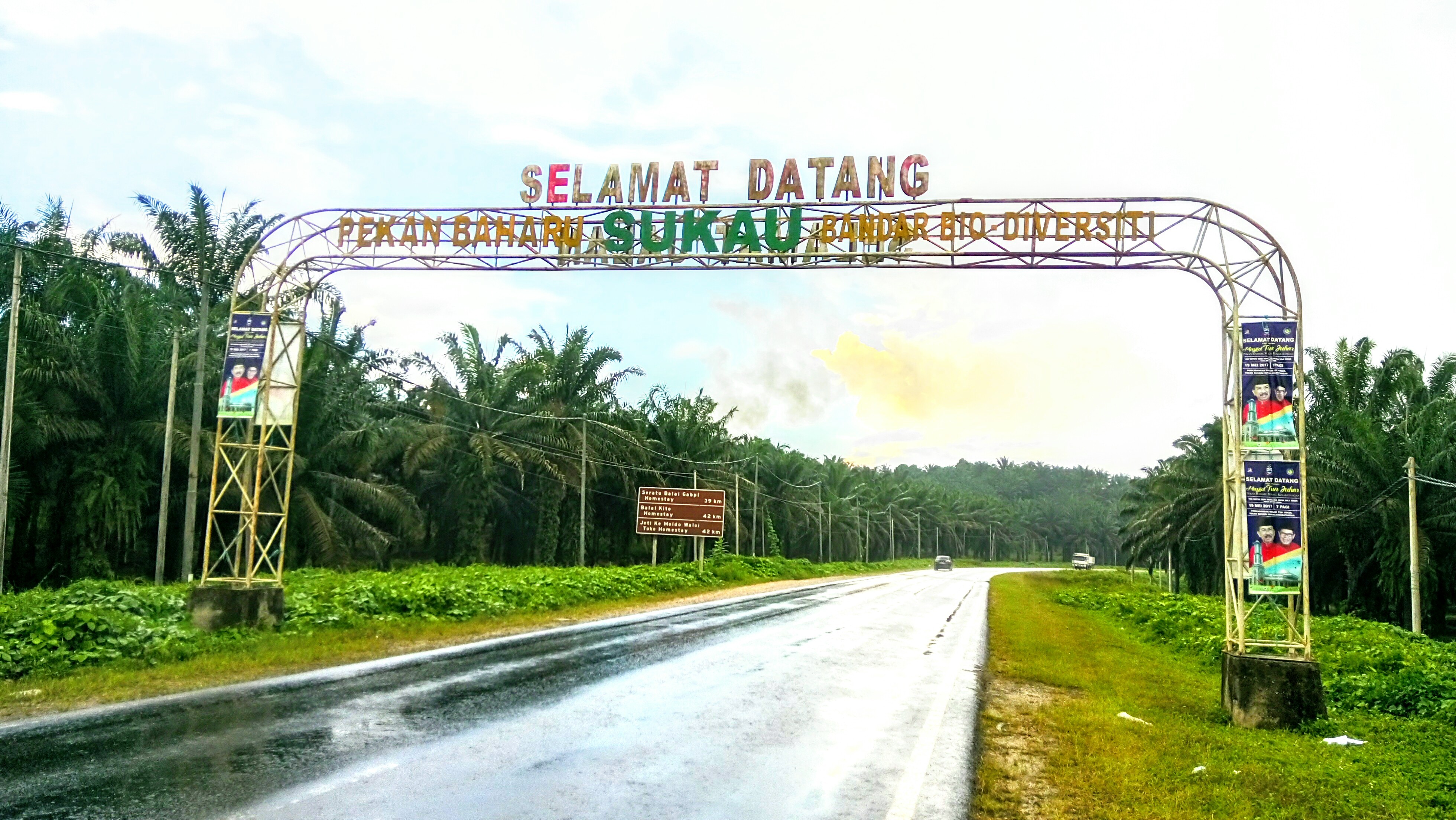
Explore Sukau - Malaysia Travel, Asia
Nestled on the banks of the Kinabatangan River in Sabah, Malaysian Borneo, Sukau is a destination where wildlife, culture, and conservation come together. Known as one of Asia’s top spots for river safaris and eco-tourism, this quiet village offers a front-row seat to encounters with Bornean orangutans, pygmy elephants, proboscis monkeys, and exotic birdlife.
Population: Approximately 1,400 in 2019.
Economy: Sukau’s economy is shaped by its riverine location and natural resources. Traditionally, the Orang Sungai community relied on fishing, small-scale farming, and forest gathering for their livelihood. Today, the village has shifted toward eco-tourism, with river cruises, jungle trekking, and homestays providing income.
Landmarks: Famous for the Kinabatangan River cruises, Gomantong Caves, and Ox-bow lakes and wetlands.
